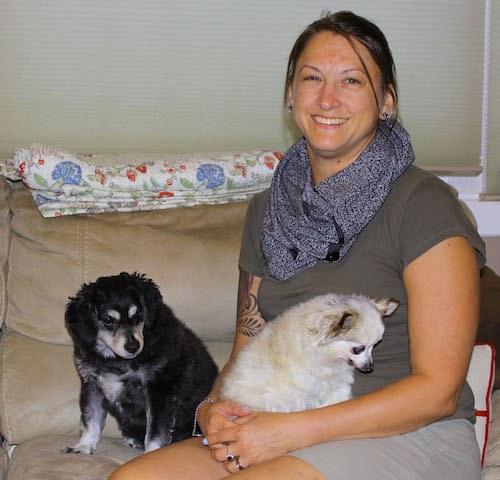Karla Boyechko is a pretty average Canadian. She enjoys life in her mid-size home with her partner and three small dogs. She’s an educator by trade and lives a comfortable life.
Comfortable, that is, apart from her diabetic condition which, at 37 years of age, has brought her to a place of desperation. Boyechko is experiencing kidney failure and is in desperate need of a donor to survive.
At the age of six, she was diagnosed with Type 1 diabetes. She’s considered a brittle diabetic, which means she has a harder time than most controlling her sugars. Over the years, this has led to a series of complications including retinal detachment, diabetic mastopathy, and, in more recent years, diabetic nephropathy—or kidney failure.
Kidney disease is listed in stages. Boyechko is between stages 4 and 5, from severe to the end stage of her kidneys’ life. Her kidneys are functioning at between 16 and 20 percent capacity and dangerously close to shutting down completely. Dialysis, she says, is the next stage, but this is accepted as a temporary measure until a donor is found. Without a donor, the outcome is, as yet, unthinkable: death.
“Kidneys work in tandem, so as soon as one starts to go, they both start to go,” says Boyechko.
This is true in the case of kidney disease, but healthy humans with no history of kidney dysfunction can manage through life with just one kidney.
“The funny thing about kidneys is that you can function nearly perfectly fine with one kidney,” Boyechko adds. “There’s a few things you should restrict, like contact sports, but other than that you can function just fine.”
Donors might wonder what will happen if they donate a kidney and then develop disease in their one good kidney. Boyechko says, in cases like that, a person would have lost them both anyway. But in situations of kidney damage due to an accident or trauma, the circumstances are different.
A variety of levels of testing are involved in finding the right kidney donor. They need to have the right blood type, be a genetic match that’s not too close to her own, and undergo rejection testing.
“If I find a donor with all of those perfectly matched, I can get 30 more years with that kidney.”
Boyechko has an A-positive blood type, but she can take a donation from anyone with a type O or type A, regardless of whether their blood is positive or negative. So far, her parents and one sibling can’t help due to a history of high blood pressure, cancer, and inadequate blood types. Boyechko holds out hope for one sister who is a blood match, but further testing is needed to determine her viability.
“It’s been a hard thing for me to accept,” Boyechko says. “I’ve always been a very independent person, so to rely on somebody in this great manner is really hard. I don’t think I could feel like I’d ever be able to pay that person back.”
She adds that in the case of kidney failure, a live donor can offer the best long-term outcome, especially if it’s someone who’s not too closely related genetically. The average downtime for a kidney donor is about two weeks, and this downtime is typically covered by health insurance or government employment insurance due to a clause on life-saving measures.
“I think the biggest message I’d like to get out there is that anybody can be a living donor for multiple things—your liver, your skin, your blood, your kidney,” Boyechko says. “There’s so many people who are waiting for transplant out there and you could walk by your possible perfect match [at any time]. All you have to do is call into a clinic and be a possible donor. There’s so much that we can do for each other. Going through all of this has really opened my eyes to the lack of awareness about that.”
Anyone can be placed on the donor list by contacting the Health Sciences Centre in Winnipeg.


